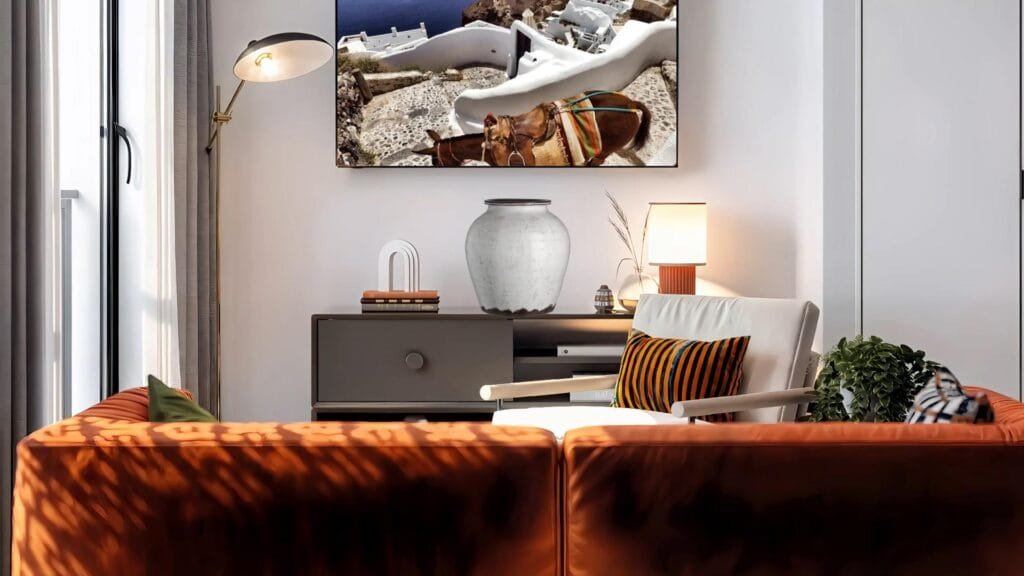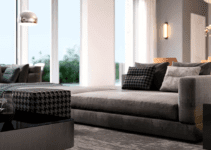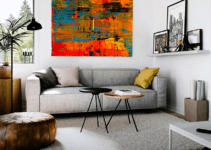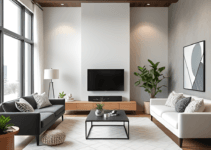Introduction to Small Living
In recent years, the concept of small living spaces has gained considerable traction, particularly in bustling urban environments where space is at a premium. The allure of minimalistic living has inspired many to embrace the challenge of making the most out of limited square footage. As cities grow denser and housing becomes more expensive, compact living spaces have emerged not just as a necessity but as a lifestyle choice celebrated for its ingenuity and efficiency.

Please read our article watch the newly uploaded video from our YouTube channel:
“Grig Stamate – Interior Design Solutions”
https://www.youtube.com/@GrigStamate
Small Living, BIG STYLE [New Modern Living Rooms with Limited Space], #4 (video)
Here, you can see other related videos from our channel:
Small Living, BIG STYLE [New Modern Living Rooms with Limited Space], #3 (video)
Small Living, BIG STYLE [New Modern Living Rooms with Limited Space], #2 (video)
One of the primary challenges associated with small living is the need to balance functionality with aesthetics. In a confined space, every square inch counts, and the design must carefully consider both practical usage and visual appeal. This dual emphasis on functionality and style is at the heart of modern design philosophies, which have evolved to cater to the unique demands of small living areas.
Modern design principles for small living spaces focus on maximizing utility without compromising on elegance. Multifunctional furniture, clever storage solutions, and innovative layouts are some of the strategies employed to make small living rooms both comfortable and visually pleasing. These design techniques not only make the space more livable but also enhance the overall ambiance, making small living rooms feel more spacious and inviting than their dimensions might suggest.
Moreover, small living spaces offer an opportunity to declutter and prioritize what truly matters. This minimalist approach to living encourages a more mindful and sustainable lifestyle, reducing waste and promoting a greater sense of ownership over one’s environment. It’s about quality over quantity, and the thoughtful selection of items that serve multiple purposes can lead to a more intentional and harmonious living experience.
As we delve deeper into the intricacies of designing modern living rooms with limited space, it becomes evident that the constraints posed by small living are not just obstacles to be overcome but opportunities to innovate and create spaces that are as functional as they are stylish. The subsequent sections will explore various design tips, furniture solutions, and aesthetic choices that can transform small living rooms into beautiful, efficient, and cozy havens.
Maximizing Space with Multi-Functional Furniture
In modern living rooms with limited space, multi-functional furniture serves as a vital solution for maximizing utility without sacrificing style. Such adaptable designs provide more than one purpose, making them essential for optimizing every square foot. For instance, a sofa bed can effortlessly transition from a cozy seating area to a comfortable sleeping arrangement, offering a practical solution for overnight guests without needing a separate guest room.
Extendable tables are another excellent example of space-saving ingenuity. These pieces can be compact when not in use but extended to accommodate additional seating during social gatherings or family meals. This adaptability ensures the living room remains spacious and uncluttered during regular use, yet fully functional when needed.
Storage ottomans and benches are particularly beneficial in small living spaces. They offer hidden storage compartments for items like blankets, books, or toys, helping to keep the area tidy and organized. Additionally, these pieces can double as extra seating or even a makeshift coffee table, further emphasizing their versatility.
Incorporating built-in storage solutions, such as shelves or cabinets integrated into furniture pieces, can also significantly enhance the efficiency of a small living room. These designs make use of vertical space and reduce the need for additional standalone storage units, thus maintaining a clean and open environment.
Modular furniture, which can be customized and reconfigured according to the room’s needs, offers unparalleled flexibility. Pieces like sectional sofas or modular shelving units can be adjusted to fit various layouts, allowing homeowners to tailor their space to their specific requirements and preferences. This adaptability ensures that the furniture remains functional as the needs of the living room evolve over time.
When selecting multi-functional furniture, it is crucial to choose pieces that seamlessly blend utility with style. Opt for designs that complement the room’s aesthetic while providing the necessary functionality. Avoid oversized items that may overwhelm the space; instead, look for sleek, streamlined options that enhance the overall look and feel of the living room.
Creative Layouts and Smart Use of Space
In the realm of modern living rooms, especially those with limited space, the layout is critical in creating a sense of openness and functionality. One effective strategy is zoning, which involves dividing the room into distinct areas for different activities. This can be achieved through the use of rugs, furniture placement, or even subtle changes in wall color. For instance, a small sectional can define the seating area, while a strategically placed bookshelf can delineate a reading nook.
Utilizing vertical space is another key technique. Wall-mounted shelves or tall bookcases draw the eye upward, making the room feel larger while providing valuable storage. Floating shelves are particularly useful, as they offer storage without taking up floor space, and can be used to display decor items, books, or plants.
Traffic flow is another essential consideration. Arranging furniture in a way that allows easy movement through the room helps maintain an open, airy feel. Avoid placing large pieces of furniture directly in the path of entryways or walkways. Instead, opt for smaller, multipurpose furniture that can be easily rearranged to suit different needs. For example, nesting tables can serve as coffee tables, side tables, or extra seating when required.
Mirrors and lighting play a significant role in enhancing the perception of space. Mirrors reflect light and create the illusion of depth, making the room appear larger. Placing a large mirror opposite a window can maximize natural light, further brightening the room. Additionally, layered lighting, which includes ambient, task, and accent lighting, ensures that the room is well-lit and inviting. Recessed lighting or wall sconces can free up floor space and add a modern touch.
By thoughtfully considering layout and utilizing smart design techniques, even the smallest living rooms can be transformed into stylish, functional spaces that feel open and welcoming. Combining zoning, vertical storage, optimal traffic flow, and effective use of mirrors and lighting can significantly enhance the livability and aesthetic of a compact living area.
Incorporating Style and Personality
Infusing personal style into a small living room without making it feel cluttered requires a thoughtful approach. A carefully selected color palette can significantly impact how spacious and cohesive the room feels. Opt for lighter shades such as soft whites, gentle grays, or pastels to create an open and airy ambiance. These colors reflect light, making the space appear larger. Accenting with darker hues or vibrant pops of color can add depth and interest without overwhelming the room.
When it comes to decor items, it’s crucial to strike a balance between reflecting individual taste and maintaining a minimalist approach. Choose pieces that serve dual purposes or have a functional aspect. For example, a stylish coffee table with storage options can keep the area tidy while adding a touch of personal flair. Similarly, multifunctional furniture like ottomans that double as storage units can be both practical and visually appealing.
Artwork and textiles play a vital role in adding character and warmth to a small living room. Select art pieces that resonate with your personality and create a focal point without dominating the space. A gallery wall with a curated collection of smaller artworks can add visual interest while maintaining a cohesive look. Textiles such as throw pillows, blankets, and rugs can introduce texture and color, making the room feel more inviting and personalized.
Accessories should be chosen with care to avoid clutter. Opt for items that have personal significance or tell a story, such as travel souvenirs or family heirlooms. These pieces can add a unique touch without crowding the space. Mirrors are also an excellent addition as they reflect light and create the illusion of a larger area.
By thoughtfully selecting a color palette, choosing multifunctional decor items, and incorporating meaningful art and accessories, you can create a small living room that exudes style and personality without compromising on space.
Other related posts from our website:
Let’s see here, three of them:
https://howtobuildahouseblog.com/how-to-style-a-small-living-room-on-a-budget/
https://howtobuildahouseblog.com/small-living-big-style-new-modern-living-rooms-with-limited-space/
https://howtobuildahouseblog.com/best-small-living-room-design-ideas-trends-and-inspiration-14/
Thank you so much for your attention.
We also sincerely hope you like our ideas from this post, and you have also enjoyed our uploaded YouTube video.
See you next time at another article. Thank you so much for your time. Bye now!



No Responses